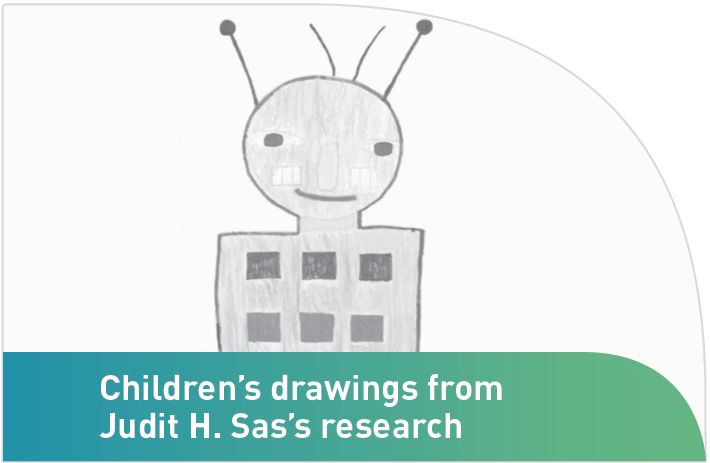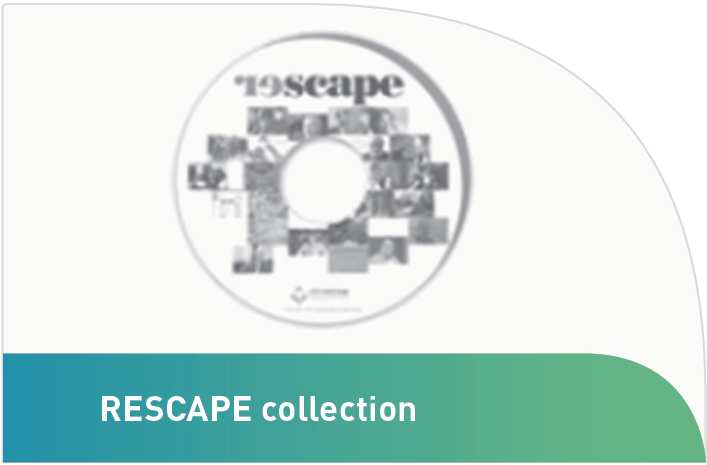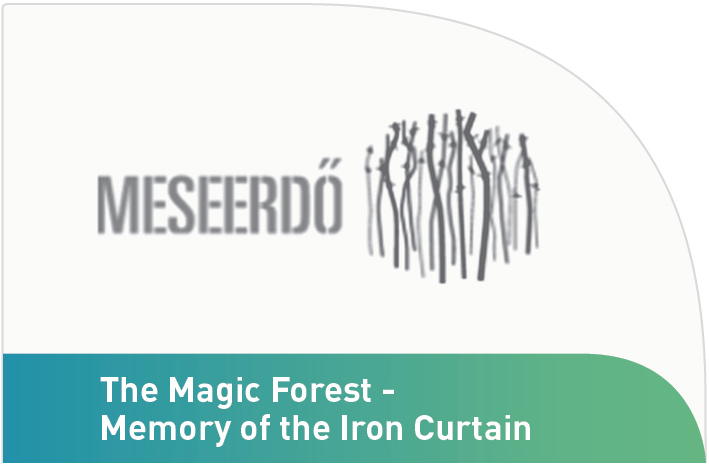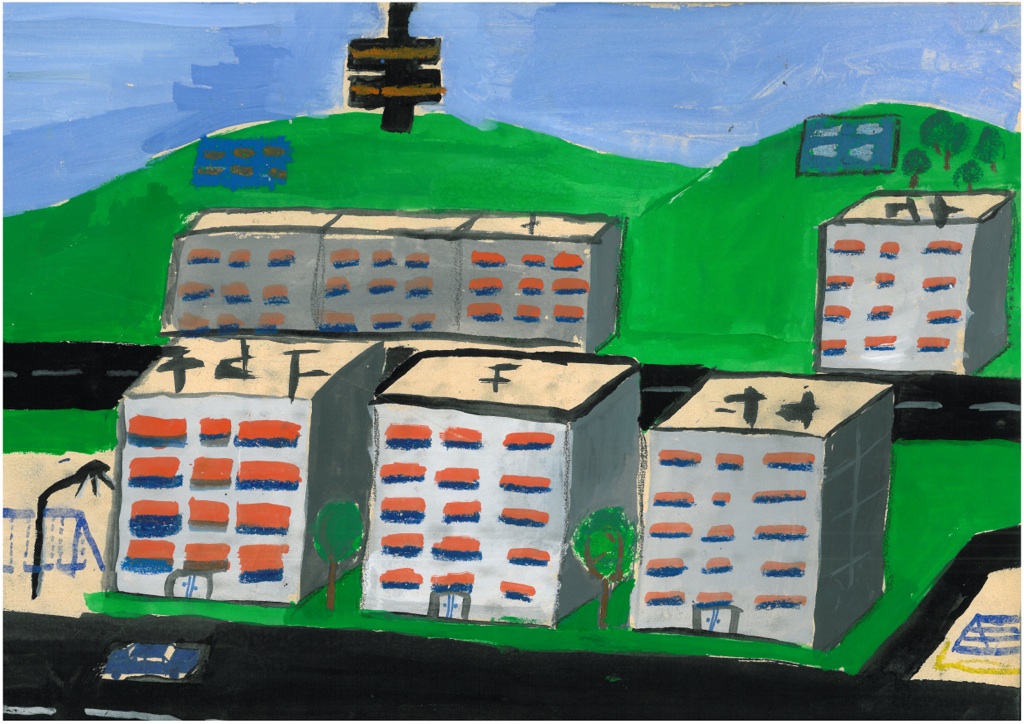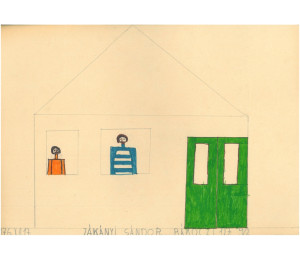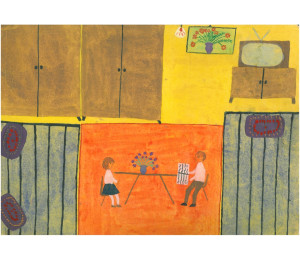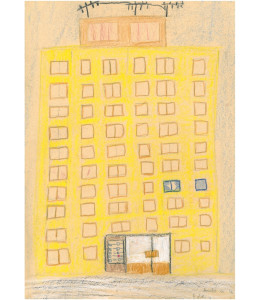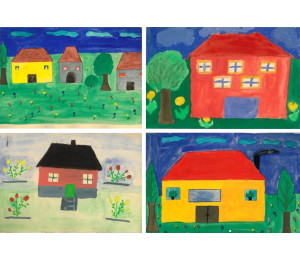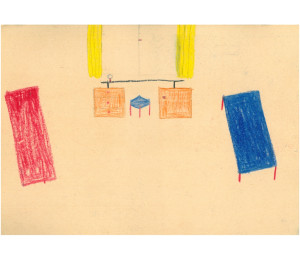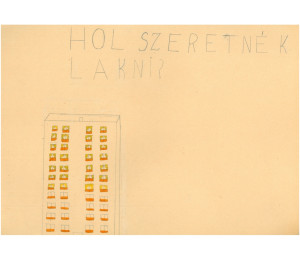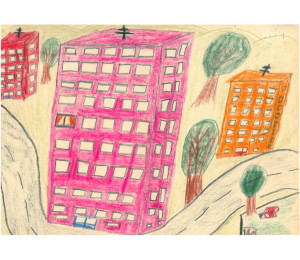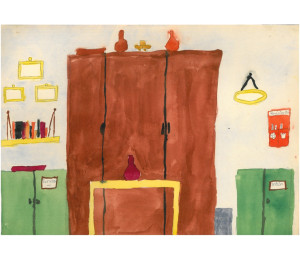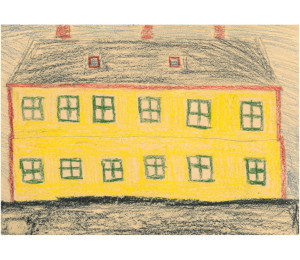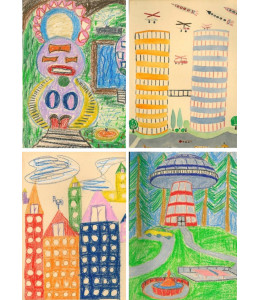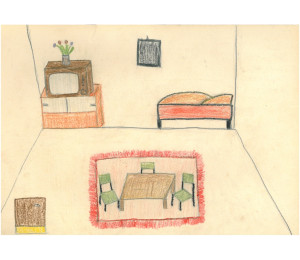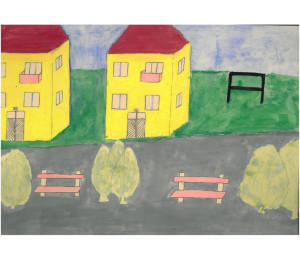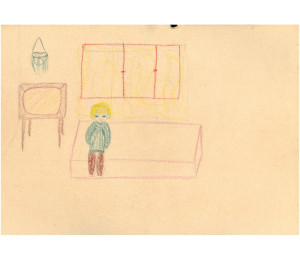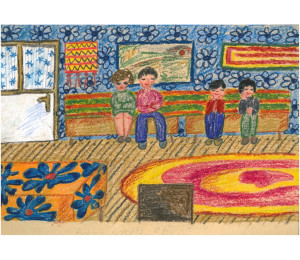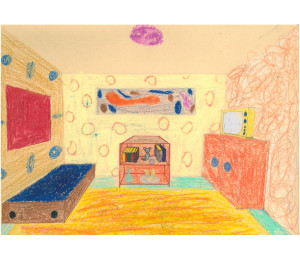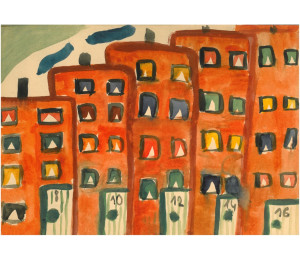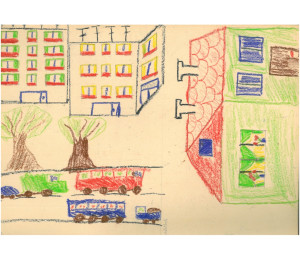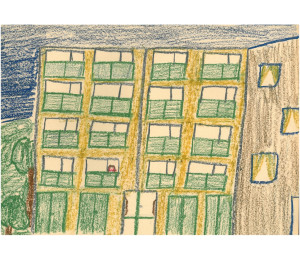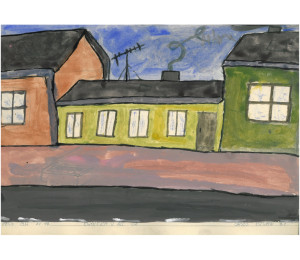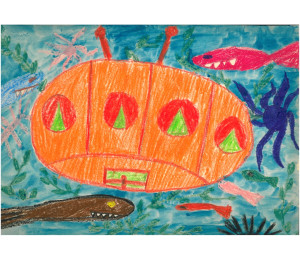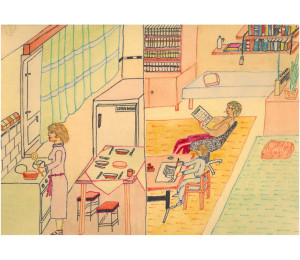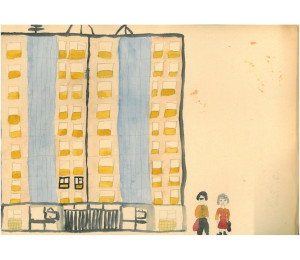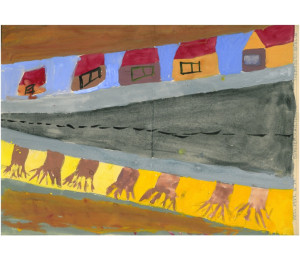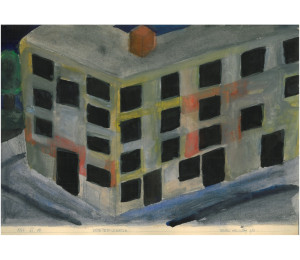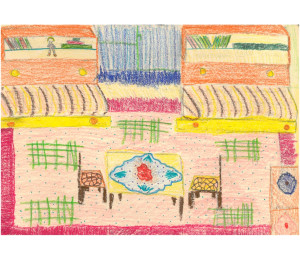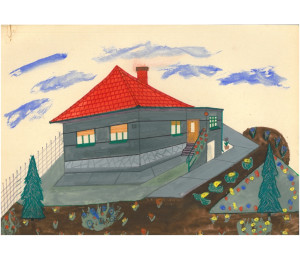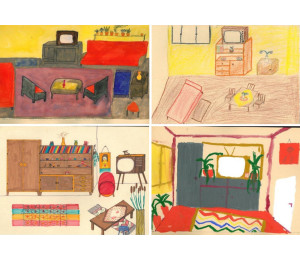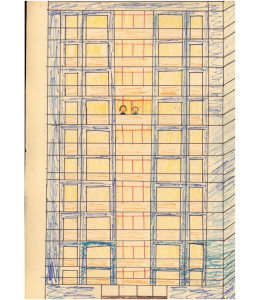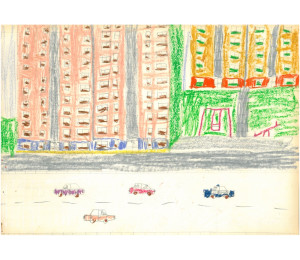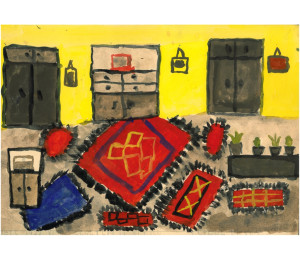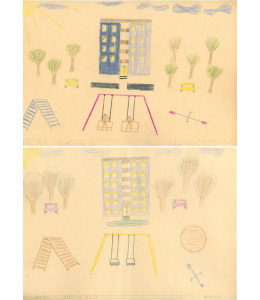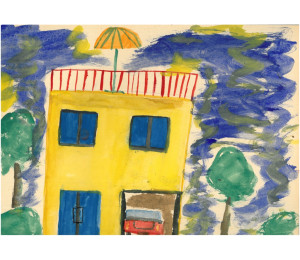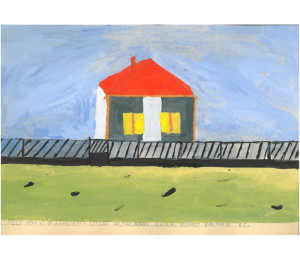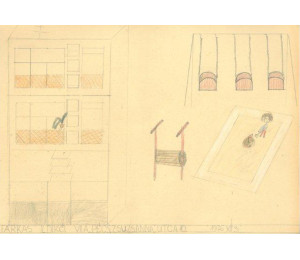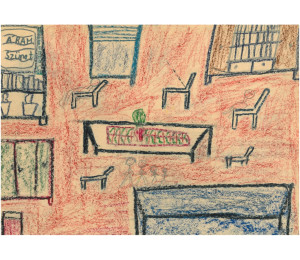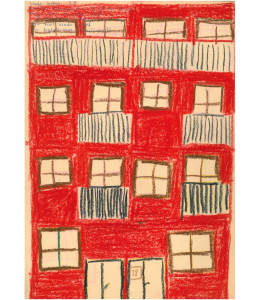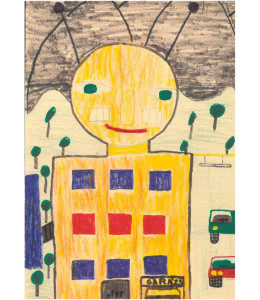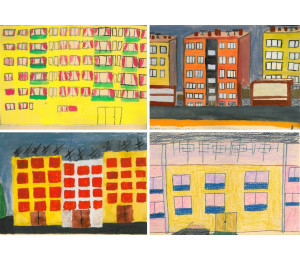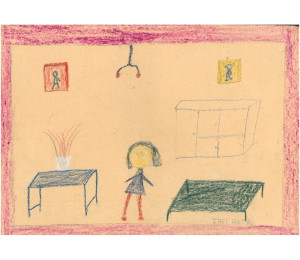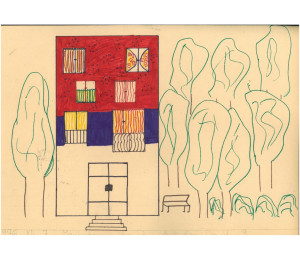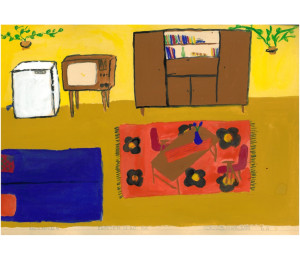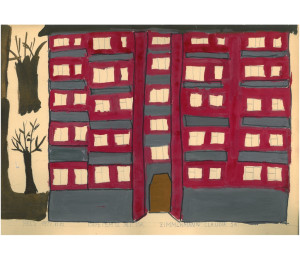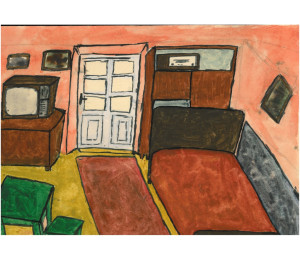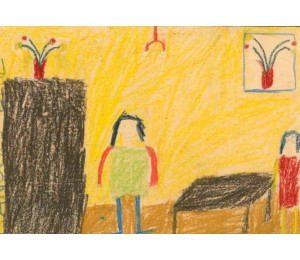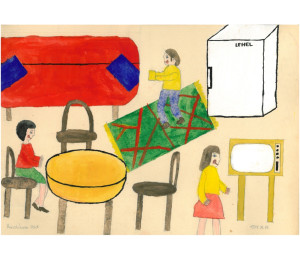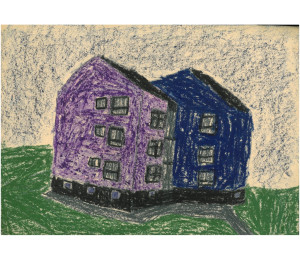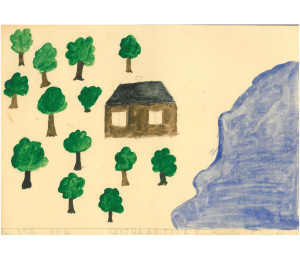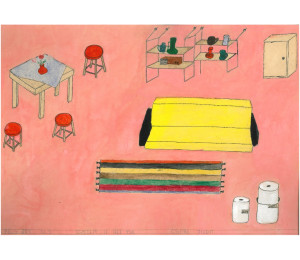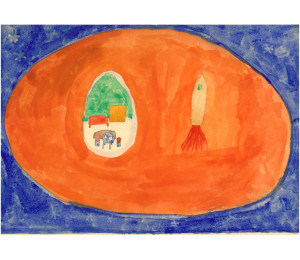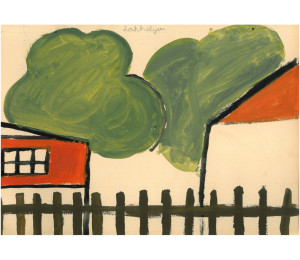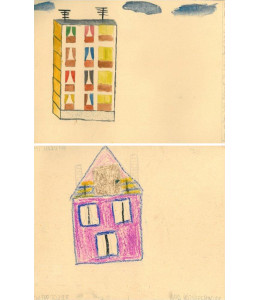"It ain’t possible that it’s a prison"
Children’s drawings from Judit H. Sas’s research
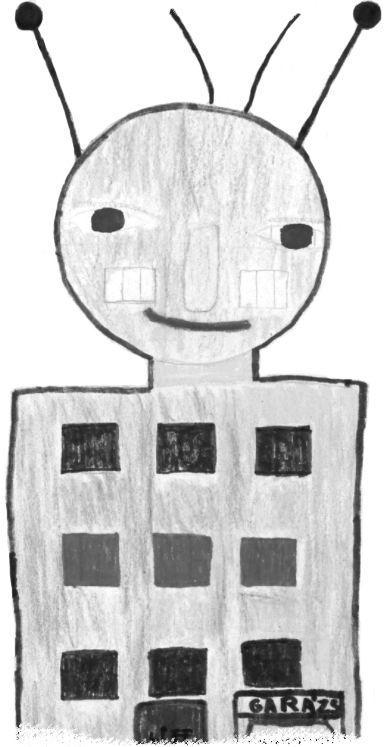
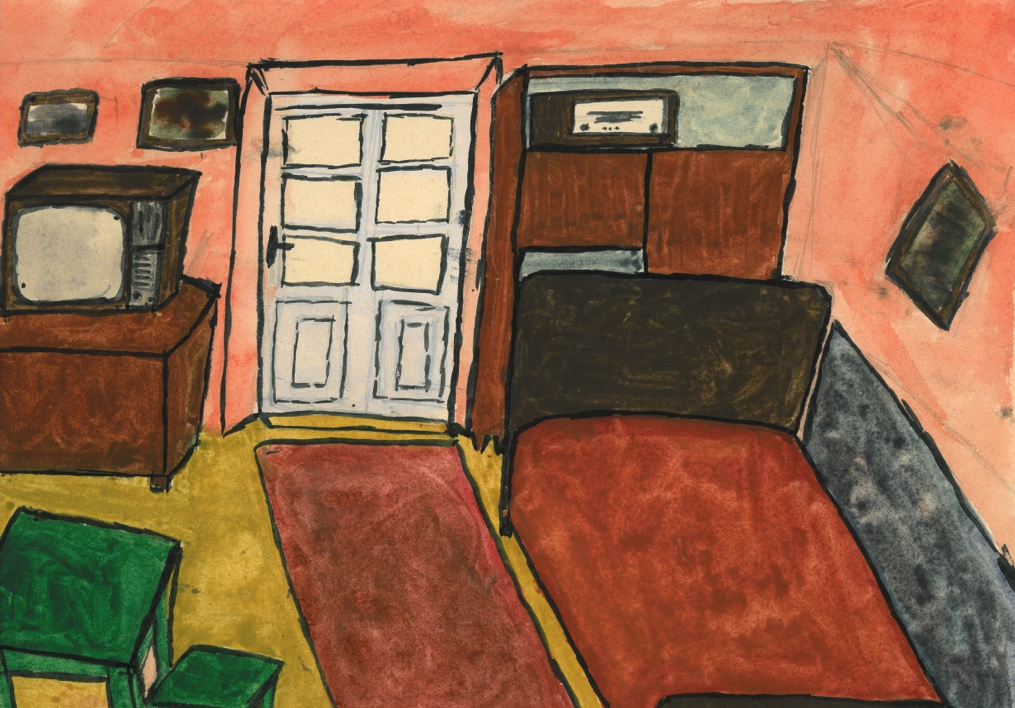
A sárkányfiaztató belsejében
Ódon pára, merev büdösség
Elszürkült csokoládé
(Erdély Mikós: A sárkányfiaztató)
Based on the labels and contents of the boxes as well as correspondence with Judit H. Sas, the following facts could be reconstructed: the research was carried out between 1976 and 1978, the data being collected by the Research Group of Education Research.
Children attending grades 5-8 were asked by the researchers to draw pictures about:
where they live at the moment
where they will live in 2000
where they want to live in 2000.
The drawings were prepared during home room classes, no researchers being present. Eventually, the children’s works were not investigated. The pictures often have titles (like: “This is where I live”, “Our house in 2000”, etc.), the name of the child, which school he or she attends, his or her class, home address, the names of the parents, their level of education and profession.
Somewhat earlier, Gábor Csanádi, Zsuzsa Gerő and János Ladányi conducted a similar research project. They made children prepare about 1,000 drawings in the 18th district of Budapest between 1974 and 1977. This research was also carried out at the Institute for Public Education and the Research Group of Education Research of the Hungarian Academy of Sciences. Surprisingly, both Judit H. Sas and János Ladányi recall the two research projects as being separate initiatives, although the methodologies were extensively discussed by the researchers at the time. 30 years later, in honor of Zsuzsa Gerő, Csanádi and Ladányi analyzed a part of the drawings from the point of view of social mobility. Beyond this, nothing has happened with the drawings, thus the two – already digitalized - collections await to be researched by someone, some day.
To address the images and make them more appealing, we quoted from contemporary Hungarian poets and writers.
Selection of images and texts: Virág Erdős
Curator: Éva Kovács
Contributed in organizing the exhibition: Anna Lujza Szász
Arrangement of the complete collection: Judit Gárdos, Éva Kovács, Anna Mirkó, Enikő Osváth, Tímea Tibori, Máté Zombory
The exhibition was funded by OTKA (Hungarian Scientific Research Fund) 
The captions are quotes from contemporary Hungarian poets and writers.
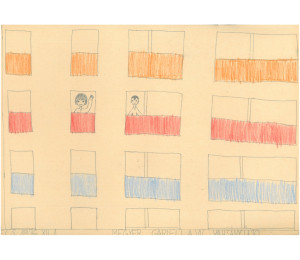
Fekhelytől ablakig
kilenc lépés. Ilyen
végtelen messziről kiáltom:
Túristák, jó utat!
(Zelk Zoltán: 373)
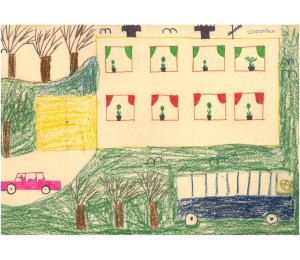
Annak a napnak a délutánján fél kettő körül
volna most,
Már annyit éltem volna eddig, hogy elég is lenne,
hogy vagyok,
Bolyongásvégi nagy türelmet vinnék haza a
pénz iránt,
Erdőbe mennénk a gyerekekkel, úgy élnénk le a
délutánt,
Órára, tükörbe, más szemébe estig már nem pil-
lantanék,
Azon a napon mesélés utánig megtartana a
tartalék.
S ha alszanak már, kilenc után, el mezítláb akkor
menni csak,
Legvégül még kifutni innen, mint bölcsnek hitt,
öreg férfiak.
(Kemény István: Egy nap élet)



